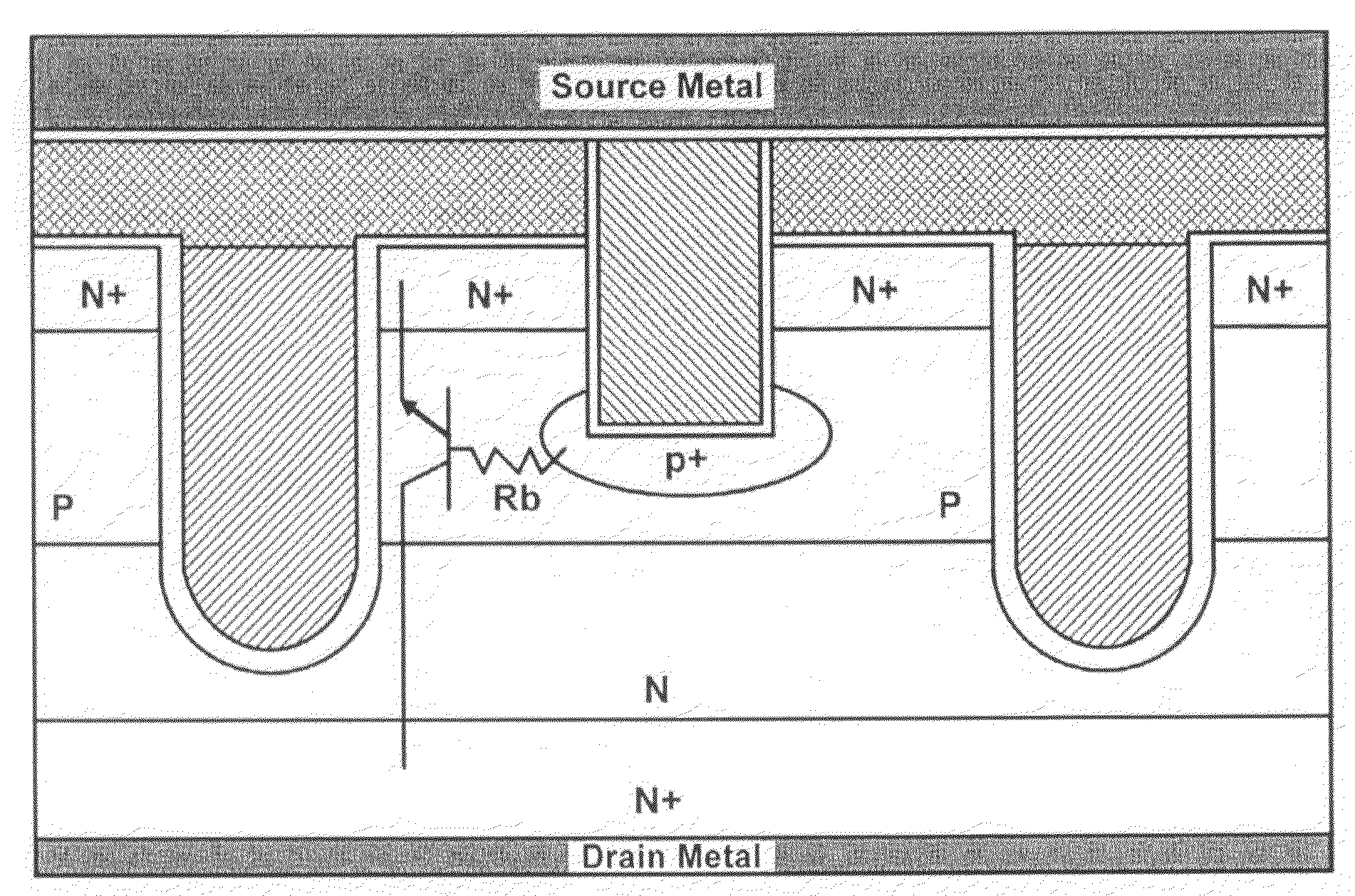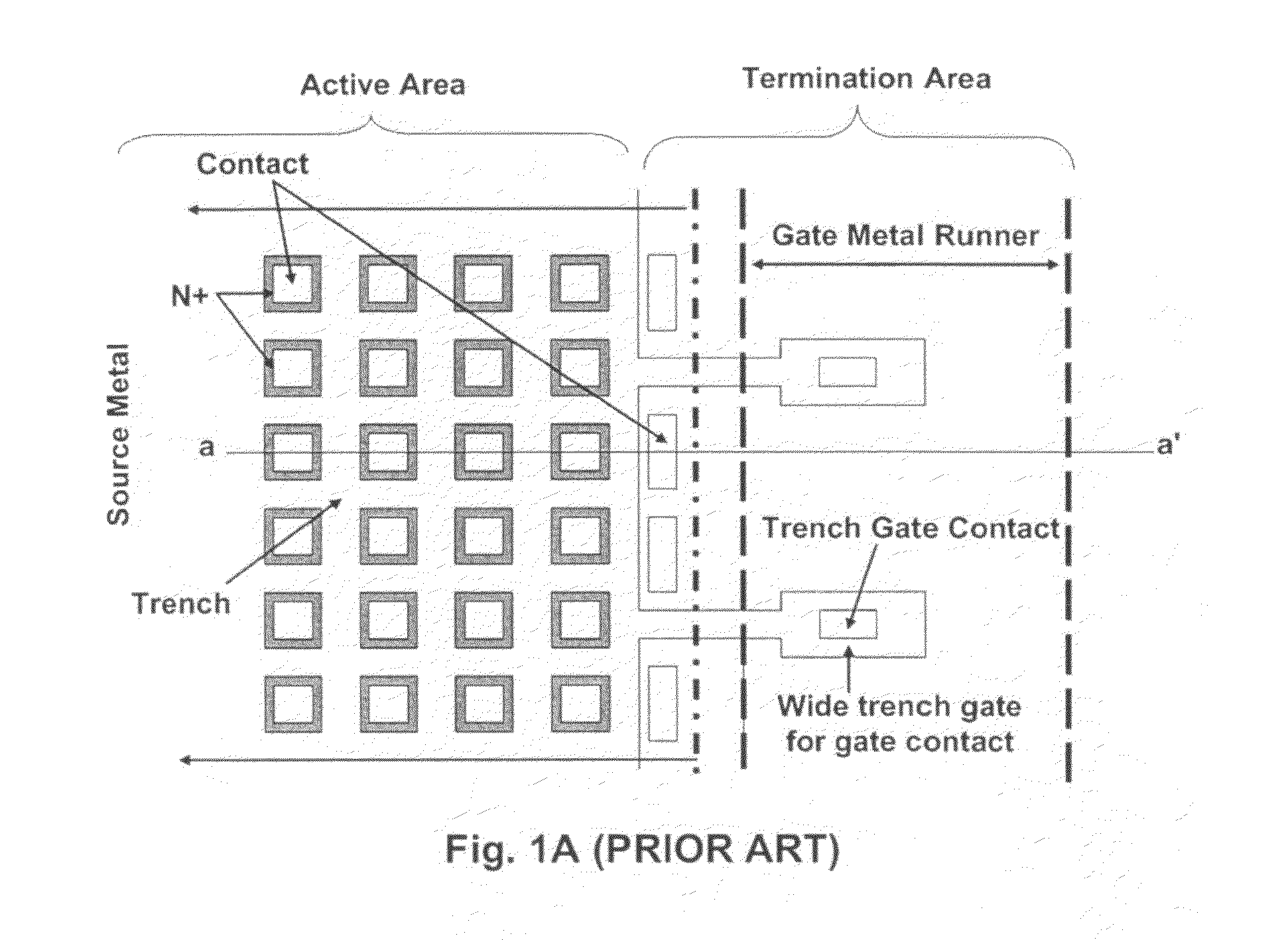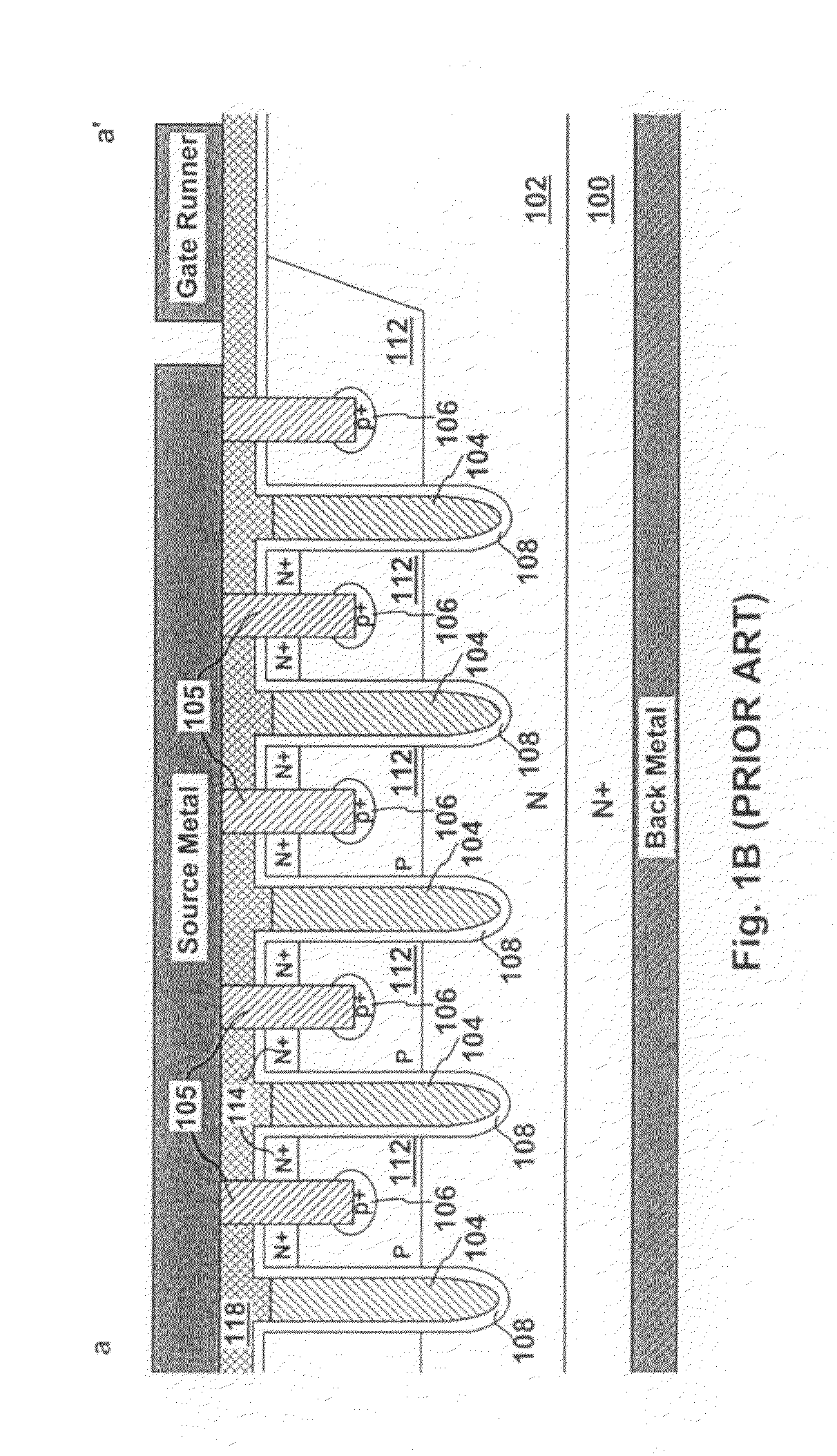Avalanche capability improvement in power semiconductor devices having dummy cells around edge of active area
a technology of power semiconductor devices and active areas, which is applied in the field of cell structure and device configuration of semiconductor devices, can solve problems such as weakening of the avalanche capability of semiconductor devices, and achieve the effects of enhancing the avalanche capability of the trench mosfet device, enhancing the avalanche capability of the trench igbt device, and enhancing the avalanche capability of the new semiconductor devi
- Summary
- Abstract
- Description
- Claims
- Application Information
AI Technical Summary
Benefits of technology
Problems solved by technology
Method used
Image
Examples
Embodiment Construction
[0031]Please refer to FIG. 6 for a preferred embodiment of this invention showing the b-b′ cross section of FIG. 4 where an N-channel trench MOSFET with dummy cells at the edge of active area formed on a heavily N+ doped substrate 600 coated with back metal 690 on rear side as drain. Onto said substrate 600, a lightly N doped epitaxial layer 601 is grown, and a plurality of trenches is etched wherein. Doped poly is filled into the gate trenches padded with a gate insulation layer 620 formed over the inner surface of gate trenches to form trenched gates 610. P-body regions 602 are extending between every adjacent trench gates 610 with N+ source region 603 near the top surface only within active area 640. Trench source-body contacts filled with tungsten plug 612 are formed penetrating through a thick contact oxide interlayer 604 with contact p+ implantation area 622 around each the source-body contact bottom to contact source region 603 and P-body region 602 to source metal 605. Dummy...
PUM
 Login to View More
Login to View More Abstract
Description
Claims
Application Information
 Login to View More
Login to View More - R&D
- Intellectual Property
- Life Sciences
- Materials
- Tech Scout
- Unparalleled Data Quality
- Higher Quality Content
- 60% Fewer Hallucinations
Browse by: Latest US Patents, China's latest patents, Technical Efficacy Thesaurus, Application Domain, Technology Topic, Popular Technical Reports.
© 2025 PatSnap. All rights reserved.Legal|Privacy policy|Modern Slavery Act Transparency Statement|Sitemap|About US| Contact US: help@patsnap.com



